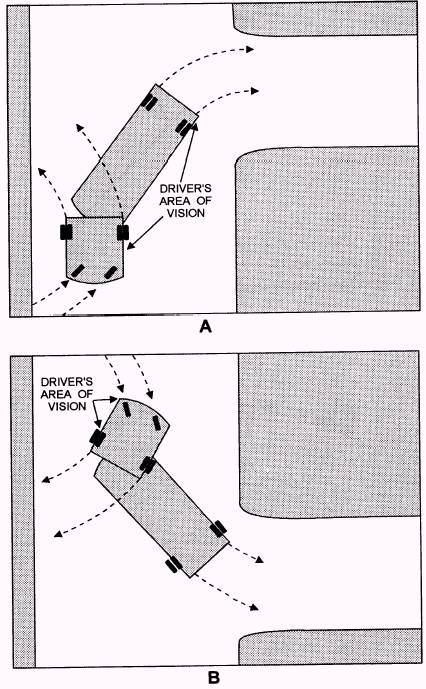|
SAFETY When pulled off the road with a tractor-trailer, turn on the four-way emergency flashers. However, do not trust taillights to provide a warning because drivers have crashed into the rear of parked vehicles because they thought it was moving. If you must stop on a road or on a shoulder, you should place reflective triangles within as soon as possible. The reflective triangles are placed at the following locations: 1. On a two lane or undivided highway, place reflective triangles on the traffic side of the vehicle within 10 feet of the front or rear corners. This marks the location of the vehicle. Additionally, place reflective triangles about 100 feet behind and ahead of the

Figure 7-24.-Backing a tractor-trailer.

Figure 7-25.-Reflective triangle placement: two lane or undivided highway.

Figure 7-26.-Reflective triangle placement: obstructed view. tractor-trailer on the shoulder or in the lane you are stopped in, as shown in figure 7-25. 2. If you are stopped beyond any hill, curve, or other obstruction that prevents other drivers from seeing the tractor-trailer within 500 feet, place reflective devices, as shown in figure 7-26. 3. If you are stopped on or by a one-way or divided highway, place reflective triangles 10 feet, 100 feet, and 200 feet toward the approaching traffic, as shown in figure 7-27. When driving a tractor-trailer, you must maintain a safe following distance to avoid a rear-end collision. A
weight, and to ensure that the load is properly tied, strapped, or chained down, and covered (if required). NOTE: It takes less time to tie down a load than it takes to report the reason a load fell off a trailer.
|

